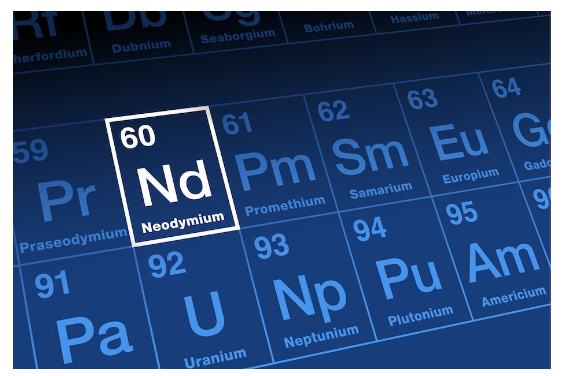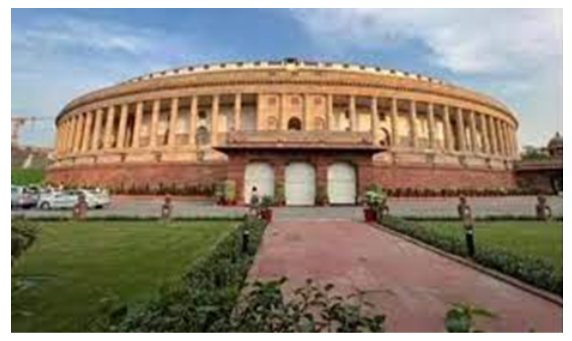Wednesday, 27th December 2023
India's FY 2024 Disinvestment Target Likely to be Missed
In News: As Government Slows Privatization Drive Ahead of Elections, Disinvestment Target May be Missed Again.

Understanding Disinvestment
Definition
- Disinvestment involves the sale or liquidation of government assets, primarily from Central and state public sector enterprises, projects, or fixed assets.
- While disinvestment may lead to privatization, it doesn't always result in complete private ownership.
Objectives
- Reducing Fiscal Burden: Alleviating pressure on the exchequer.
- Improving Finances: Enhancing public financial health.
- Encouraging Ownership: Fostering private sector participation.
- Funding Growth: Supporting development programs.
- Promoting Competition: Sustaining market competition.
Evolution of Disinvestment in India
- Initiated in 1991-92, disinvestment gained momentum, leading to the establishment of the Department of Disinvestment in 1999.
- Although it became a full Ministry in 2001, it was later merged into the Finance Ministry in 2004.
- The department was renamed DIPAM (Department of Investments and Public Asset Management) in 2016, serving as the central entity for disinvestment.
Benefits of Disinvestment
- Financial Gains: Government generates revenue.
- Debt Reduction: Facilitates long-term economic growth.
- Efficiency Boost: Private ownership enhances efficiency.
- Resource Release: Frees up public resources for social sectors.
Criticism of Disinvestment
- Loss of Regular Payments: Dividend income to the government diminishes.
- Private Monopoly Concerns: Risk of creating private monopolies.
- Sector Classification Issues: Challenges in defining strategic and non-strategic sectors.
- Faulty Fiscal Model: Selling assets to bridge fiscal deficits criticized as short-sighted.
Disinvestment Challenges in FY 2024
- Privatization Pause Ahead of Elections
- As general elections approach, the government is slowing down its privatization efforts, potentially impacting the disinvestment target for FY 2024.
Key Highlights
- Current Fiscal Progress: Only 20% of the budgeted Rs 51,000 crore achieved.
- Historical Perspective: Meeting annual disinvestment targets proved challenging over the last three decades.
- 2023 Setbacks: Strategic sales face hurdles, delaying progress.
- Government's Principle: Post-2014, government focuses on private sector collaboration for development, emphasizing stake sales and PSU listings on the stock market.
Source: ET
Women's Engagement in NREGS Surges to 59% in Current Fiscal
In News: In the last decade, female involvement in the Mahatma Gandhi National Rural Employment Guarantee Scheme (MGNREGS) reached its highest point in the fiscal year.
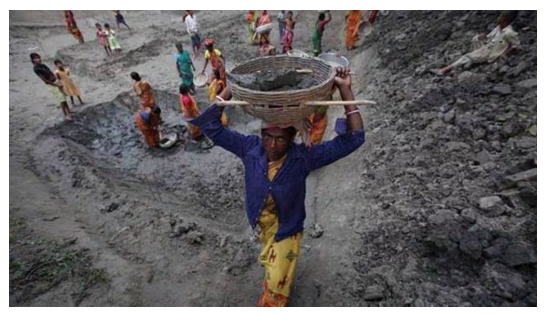
Understanding Mahatma Gandhi National Rural Employment Guarantee Scheme (MGNREGS)
- Legislative Foundation
- The National Rural Employment Guarantee Act (NREGA) was enacted in September 2005.
- A subsequent amendment in 2009 renamed it the Mahatma Gandhi National Rural Employment Guarantee Act (MGNREGA).
- Mandate
- The primary goal is to offer at least 100 days of guaranteed wage employment annually to rural households whose adult members willingly engage in unskilled manual work.
- Implementation Structure
- MGNREGS operates as a Centrally-Sponsored Scheme, jointly funded by the Central and State governments.
- The Ministry of Rural Development oversees its execution.
- Salient Features
- Legal Right to Work
- MGNREGA ensures a legal guarantee for wage employment, with one-third of beneficiaries mandated to be women.
- Demand-Driven
- The program is demand-driven, responding to the work requests of wage-seekers.
- Decentralized Implementation
- State governments hold the authority to establish rules, with Gram Panchayats (GPs) implementing at least 50% of the works.
- Annual Reporting
- The Central Employment Guarantee Council (CEGC) compiles an annual report on MGNREGA outcomes, presented to Parliament.
- Legal Right to Work
National Coverage
MGNREGA spans the entire country, excluding districts with a 100% urban population. In 2022-23, 6.19 crore households availed work under the scheme.
Challenges and Loopholes in the Scheme
- Fund Misappropriation
- Over the past four years, Social Audit Units identified financial misappropriation of Rs 935 crore. Only a minimal 1.34% has been recovered to date.
- Delay in Payments
- Wages are considered paid upon the signing of the Fund Transfer Order (FTO). Delays in FTO processing, not accounted for by the Management Information System (MIS), contribute to payment delays.
- Banking Puzzle
- Understaffed rural banks lead to overcrowding, requiring workers to visit multiple times to withdraw wages.
- This cumbersome process often results in workers not receiving timely payments during urgent situations.
Source: IE
Tribunals - Edukemy Current Affairs
In News: In a recent case, the Supreme Court emphasized that Tribunals, operating within the confines of their governing laws, cannot compel the government to formulate policies.

Supreme Court's Decision in UoI & Ors. v. AIR Commodore NK Sharma Case
- Limitations on Tribunal Powers
- The Supreme Court clarified that tribunals, including the Armed Forces Tribunal (AFT), lack the authority to compel the government to formulate specific policies.
- The formulation of policies falls within the exclusive domain of the government.
- Judicial and Quasi-Judicial Roles
- While the AFT possesses powers similar to a civil court, it does not hold the authority of higher courts like the Supreme Court or High Courts.
- The judiciary, including quasi-judicial bodies, cannot mandate policy creation.
- Article 226 Powers
- The High Courts, operating under Article 226 of the Constitution, can bring lawsuits against government entities if citizens' rights are violated.
- However, they cannot direct the government to establish particular policies.
Understanding Tribunals in India
Constitutional Provisions
- Tribunals, introduced by the 42nd Amendment Act, 1976, find constitutional backing in Article 323-A (Administrative Tribunals) and Article 323-B (Tribunals for Other Matters).
- They address various disputes and matters falling within legislative competence.
Differences in Articles 323 A and 323 B
- Article 323 A pertains to public service matters, while Article 323 B covers other specified matters.
- Article 323 A allows tribunal establishment by Parliament, while Article 323 B permits both Parliament and state legislatures.
- Article 323 A has no tribunal hierarchy, unlike Article 323 B, which allows for a hierarchy.
Article 262
Article 262 empowers the Central government to adjudicate inter-state river conflicts.
Types of Tribunals in India
- Administrative Tribunals
- Specialized bodies under the Administrative Tribunals Act, 1985, handle disputes related to recruitment and service terms for public posts at the Union and State levels.
- Examples include the Central Administrative Tribunal (CAT).
- Water Disputes Tribunal
- Enacted under the ISRWD Act, 1956, these tribunals resolve inter-state river water disputes.
- Armed Forces Tribunal (AFT)
- Established by the Armed Forces Tribunal Act, 2007, the AFT adjudicates disputes related to commission, appointments, and conditions of service for individuals under the Army, Navy, and Air Force Acts.
- National Green Tribunal (NGT)
- Created by the NGT Act, 2010, the NGT expedites environmental dispute resolution.
- Income Tax Appellate Tribunal
- Under Section 252 of the Income Tax Act, 1961, this tribunal addresses income tax-related appeals.
|
UPSC Previous Year Questions Prelims (2012) Q. The National Green Tribunal Act, 2010 was enacted in consonance with which of the following provisions of the Constitution of India?
Select the correct answer using the codes given below: (a) 1 only Ans: (a) |
Source: TH
Illegal Sand Mining - Edukemy Current Affairs
In News: Bihar police conducted a significant operation to apprehend individuals involved in illegal sand mining, resulting in the arrest of sand smugglers.
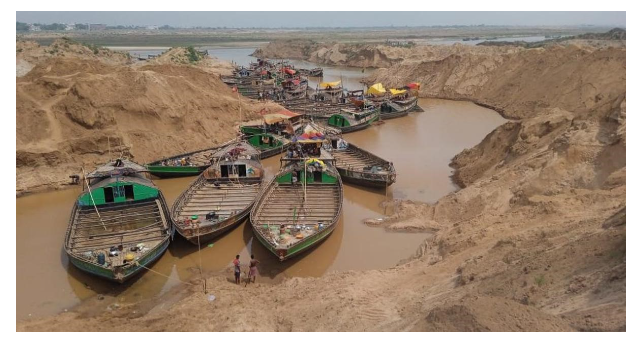
Understanding Sand Mining
Definition and Sources
- Sand mining involves extracting primary natural sand and resources for valuable minerals, metals, and construction materials from various environments.
- In India, sand sources include rivers, lakes, coastal areas, agricultural fields, and manufactured sand (M-Sand).
Factors Behind Illegal Sand Mining
- Regulation Gaps:
- Inadequate regulations and enforcement contribute to the prevalence of illegal sand mining.
- Construction Demand:
- High demand for sand in construction, driven by population growth and urbanization, fuels illegal extraction.
- Corruption Influence:
- Corruption and the sway of organized sand mafias hinder efforts to control illegal mining.
- Lack of Alternatives:
- Limited adoption of sustainable alternatives like manufactured sand (M-sand) sustains reliance on natural sand.
- Weak EIA Implementation:
- Ineffective implementation of Environmental Impact Assessments (EIA) allows unauthorized sand extraction to persist.
Consequences of Sand Mining
- Habitat Disruption:
- Unregulated sand mining alters riverbeds, causing erosion and disrupting aquatic habitats.
- Flooding and Sedimentation:
- Depletion of sand contributes to increased flooding and sedimentation, negatively impacting ecosystems.
- Groundwater Depletion:
- Deep pits from mining can lower the groundwater table, leading to water scarcity.
- Biodiversity Loss:
- Habitat disruption and degradation result in significant biodiversity loss, affecting aquatic and riparian species.
Initiatives to Prevent Sand Mining in India
MMDR Act, 1957
- Sand Classification:
- Sand is classified as a minor mineral under the MMDR Act, with state governments holding administrative control.
- Amendment Act, 2023:
- Recent amendments aim to curb illegal mining by strengthening regulations.
2006 Environment Impact Assessment (EIA)
- Approval Mandate: Supreme Court mandates approval for all sand mining activities, even in areas less than 5 hectares, to address environmental impact.
Sustainable Sand Management Guidelines (SSMG) 2016
- Environmental Responsibility: Issued by the Ministry of Environment, the guidelines focus on environmentally sustainable and socially responsible mining.
Enforcement and Monitoring Guidelines for Sand Mining 2020
- Uniform Protocol:
- Guidelines provide a consistent protocol for monitoring sand mining activities across India.
- Surveillance Technologies:
- Use of new technologies, such as drones and night vision, enhances monitoring capabilities.
|
UPSC Previous Year Questions Mains (2019) Q. Coastal sand mining, whether legal or illegal, poses one of the biggest threats to our environment. Analyse the impact of sand mining along the Indian coasts, citing specific examples. |
Source: DTE
UNESCO’s 2023 Prix Versailles
In News: Kempe Gowda International Airport (KIA) Bengaluru has received prestigious recognition at the 2023 Prix Versailles awards hosted by UNESCO.

UNESCO's Prix Versailles Overview
- Annual Recognition
- The Prix Versailles has been annually announced at UNESCO since 2015, acknowledging exceptional achievements in global architecture and design.
- Celebrating Excellence
- These awards specifically celebrate excellence in design, emphasizing intelligent sustainability as a cultural force.
- They recognize innovation, creativity, reflection of local heritage, ecological efficiency, and the promotion of social interaction.
Recognition for Kempe Gowda International Airport (KIA) Bengaluru at Prix Versailles 2023
- Terminal 2 (T2) Honors
- World's Most Beautiful Airports
- T2 at KIA earned recognition as one of the 'World's most beautiful airports.'
- World Special Prize for Interior 2023
- T2 was honoured with the prestigious 'World special prize for an interior 2023.'
- World's Most Beautiful Airports
- Key Features of KIA's Terminal 2 (T2)
- Terminal in a Garden
- Foundational Pillars:
- T2, also known as the Terminal in a Garden, is built on four pillars — technological leadership, environmental and ecological stewardship, and a celebration of Karnataka’s rich heritage and culture.
- Green Certifications:
- T2 boasts the IGBC platinum certification from the Indian Green Building Council and is recognized as the world's largest terminal pre-certified with a platinum LEED rating by the US Green Building Council, highlighting its commitment to sustainable design.
- Foundational Pillars:
- Terminal in a Garden
Source: BS
The OSIRIS-APEX
In News: The spacecraft OSIRIS-REx, renowned for delivering asteroid samples from Bennu, has embarked on an unprecedented new mission. NASA has officially renamed it OSIRIS-APEX.
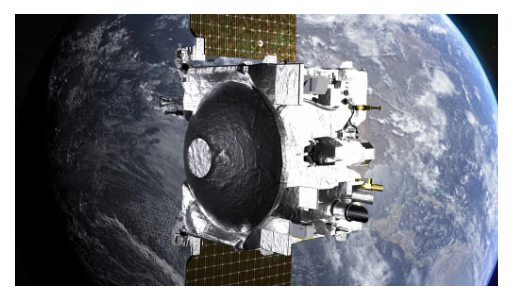
About OSIRIS-APEX Mission
- Studying Apophis' Close Encounter
- The OSIRIS-APEX mission is dedicated to studying the physical changes that asteroid Apophis will undergo during its rare close encounter with Earth in April 2029.
- Unprecedented Proximity
- Close Approach:
- Apophis is expected to come within 20,000 miles (32,000 kilometres) of Earth's surface in 2029, closer than our highest-altitude satellites.
- Gravitational Effects:
- The mission aims to observe changes induced by Earth's gravitational pull during Apophis' flyby, including alterations in its orbit, rotation speed, and surface features such as quakes or landslides.
- Close Approach:
- Spacecraft Descent
- The OSIRIS-APEX spacecraft is designed to descend toward the surface of Apophis, providing a unique perspective for comprehensive observations.
Key Apophis Facts
- Discovery and Composition
- Discovery Date:
- Apophis was discovered on June 19, 2004.
- Composition:
- It is categorized as a stony "S-type" asteroid, composed of silicate material, and a mix of metallic nickel and iron.
- Solar System Relic:
- Originating from the early formation of our solar system about 4.6 billion years ago, Apophis is a relic from the main asteroid belt between Mars and Jupiter.
- Discovery Date:
- Orbital Evolution
- Altered Orbit:
- Over millions of years, Apophis' orbit was influenced by large planets like Jupiter, bringing it closer to the Sun and classifying it as a near-Earth asteroid rather than a main-belt asteroid.
- Altered Orbit:
Source: IT
Similipal Tiger Reserve (STR)
In News: During routine patrolling in the Similipal Tiger Reserve (STR) in Mayurbhanj district, Odisha, forest department personnel apprehended four poachers and two timber smugglers

Similipal Tiger Reserve (STR) Overview
- Abundant water sources, with perennial rivers like Budhabalanga, Salandi, and tributaries of the Baitarani River flowing from the Reserve.
- Water Sources:
- The inclined plateau rises abruptly from low coastal plains, facing the Bay of Bengal and merging northwards with Chhota Nagpur.
- Plateau Formation:
- Landform Description
- Undulating Terrain:
- Predominantly undulating and hilly, with open grasslands and wooded areas.
- Undulating Terrain:
- Geographical Features
- Topography:
- Surrounded by high plateaus and hills, featuring the highest peaks of Khairiburu and Meghashini at 1515m above mean sea level.
- UNESCO Recognition:
- In 2009, STR, along with a 'transitional area' of 2250 sq. km, became part of the World Network of Biosphere Reserves by UNESCO.
- Topography:
- Conservation Heritage
- Tiger Reserve Declaration: Designated as a 'Tiger Reserve' in 1956.
- Project Tiger Inclusion: Under the national conservation program 'Project Tiger' since 1973.
- Geographical Location
- Situated in the northernmost part of Odisha, Similipal Tiger Reserve (STR) is located within the Mayurbhanj District.
- Vegetation and Biodiversity
- Floral Diversity
- Varied Habitats: Mix of different forest types and habitats, with Northern tropical moist deciduous dominating some semi-evergreen patches.
- Unique Feature: Home to melanistic tigers, making it the only landscape in the world with such a population.
- Floral Diversity
- Cultural and Tribal Presence
- Tribal Communities: Inhabited by various tribes, including Kolha, Santhala, Bhumija, Bhatudi, Gondas, Khadia, Mankadia, and Sahara.
- Floral Abundance
- Rich Flora: Boasting 1078 plant species, including 94 orchid species.
- Dominant Tree Species: Sal is the prevalent tree species in the reserve.
- Faunal Diversity
- Wildlife Variety: Home to diverse fauna, including Leopard, Gaur, Elephant, Langur, Barking and Spotted Deer, Sloth Bear, Mongoose, Flying Squirrel, Porcupine, Turtle, Monitor Lizard, Python, Sambar, Pangolin, and more.
Source: TP
Mission Karmayogi
In News: To mark Good Governance Day, the Union Minister of Personnel, Public Grievances & Pensions unveiled the Expanded Edition of Mission Karmayogi during an event in New Delhi.
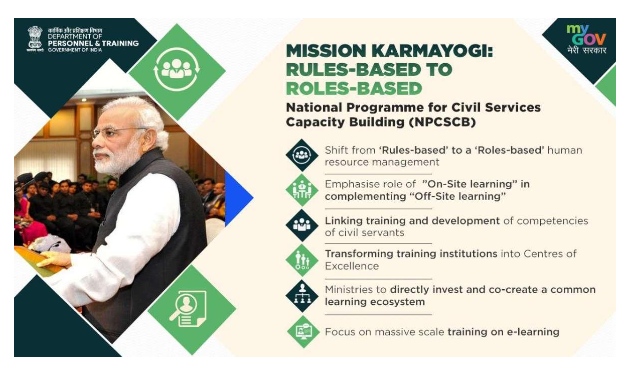
Mission Karmayogi Overview
- National Programme for Civil Services Capacity Building
- Mission Karmayogi, under the National Programme for Civil Services Capacity Building (NPCSCB), strives to equip Civil Servants for the future by fostering creativity, innovation, and transparency through the integration of technology.
- Foundational Objective
- Core Purpose: To lay a robust foundation for civil servants across the country.
- Learning Focus: Emphasizes both 'on-site learning' and "off-site learning" for a comprehensive training approach.
- Government Approval
- On September 2, 2020, the Government sanctioned the NPCSCB, encompassing six key pillars:
- Policy Framework
- Institutional Framework
- Competency Framework
- Digital Learning Framework (iGOT-Karmayogi)
- The electronic Human Resource Management System (e-HRMS)
- The Monitoring and Evaluation Framework.
- On September 2, 2020, the Government sanctioned the NPCSCB, encompassing six key pillars:
- Inclusivity
- Coverage: Encompasses all civil servants, including contractual employees, across various ministries, departments, organizations, and agencies of the Union Government.
Key Features of iGOT Karmayogi Platform
- My iGOT
- Targeted Training
- Delivers specific training courses on the home page of individual officers, addressing their unique capacity-building needs identified in the Capacity-Building Plan for their Ministries/Departments.
- Targeted Training
- Blended Programs
- Equitable Access: Facilitates fair access to training methodologies at all levels, integrating traditional in-person classroom courses with online learning components.
- Flexibility: Enables officers and faculty to combine the flexibility of online courses with the invaluable benefits of face-to-face classroom interactions.
- Curated Programs
- Diverse Learning: Tailored to cater to the varied learning needs of Ministries/Departments and Training Institutions.
- Programmatic Approach: Allows Course Providers to curate relevant content, resources, and assessments from the iGOT repository, offering a customized learning journey.
Source: PIB
China Warns of Rocket Debris in South China Sea
In News: China issued a warning about the debris of a rocket, stating that remnants from the sixth launch of its most potent launch vehicle would impact an area within the South China Sea.
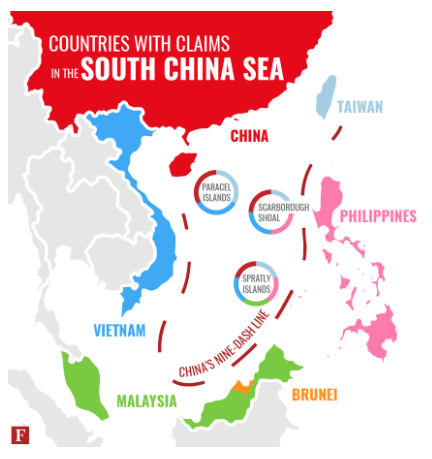
Overview of the South China Sea
- Geographical Details
- The South China Sea is a western Pacific Ocean arm adjacent to the Southeast Asian mainland, covering an expanse of approximately 1,423,000 square miles (3,685,000 square km), with an average depth of 3,976 feet (1,212 meters).
- Geopolitical Boundaries
- Surrounding Nations
- Bordered by China, Taiwan, the Philippines, Malaysia, Indonesia, Brunei, and Vietnam.
- Southern Boundary
- Marked by a seabed rise between Sumatra and Borneo.
- Northern Boundary
- Extends from the northernmost point of Taiwan to the coast of Fujian province, China, in the Taiwan Strait.
- Connection
- Linked to the East China Sea via the Taiwan Strait and the Philippine Sea through the Luzon Strait, collectively forming the China Sea.
- Surrounding Nations
- Archipelagos and Climate
- Key Islands: Home to major archipelagos, including the Paracel Islands (controlled by China) and the Spratly Islands.
- Climate: Characterized by a tropical climate heavily influenced by monsoons.
- Trade Significance
- Sea Lane Importance: Second most utilized sea lane globally.
- Trade Route: A vital trade route facilitating the transportation of crude oil from the Persian Gulf and Africa, passing through the Strait of Malacca to reach destinations such as Singapore, Thailand, Hong Kong, Taiwan, South Korea, and Japan.
- Major Ports
- Strategic Ports: Hong Kong, Singapore, and Kaohsiung in southern Taiwan.
Source: REUTERS
X-ray Bursts
In News: AstroSat, India's first multi-wavelength space observatory, has detected brief sub-second X-ray bursts from a new and distinctive neutron star with an ultrahigh magnetic field, known as a magnetar.

X-ray Bursts Explained
X-ray Burst Occurrence
- X-ray bursts manifest in low-mass X-ray binary systems, featuring the orbital dance of a neutron star and a low-mass main sequence star.
- The gravitational forces, especially from the neutron star, lead the companion star to overflow its Roche-lobe, channelling hydrogen into an accretion disk around the neutron star.
- The extreme temperatures and pressures on the neutron star's surface swiftly transform the hydrogen into helium.
- Upon accumulating a critical mass of helium, an explosive ignition occurs, elevating the neutron star's surface to several tens of millions of degrees and emitting an abrupt burst of X-rays.
- The binary system then reverts to a quiescent state as the neutron star resumes building up its helium surface layer, resulting in recurrent X-ray bursts.
Regular Intervals and Cycle
These X-ray bursts typically follow a cyclical pattern, occurring at regular intervals separated by several hours or days.
Understanding Magnetars
- Distinctive Features
- Magnetars stand out as an extraordinary type of neutron star, distinguished by an exceptionally potent magnetic field.
- This magnetic field surpasses a normal neutron star's strength by about 1,000 times and eclipses the Earth's field by a trillion times.
- Energy Release and Cosmic Significance
- Magnetars unleash colossal amounts of energy through flares, X-rays, and gamma-ray bursts, making them associated with extreme cosmic events.
- Their capacity for energetic phenomena positions them as one of the most peculiar entities in the cosmos, rivalling even black holes.
- Origin of Magnetic Field
- The origin of a magnetar's intense magnetic field is linked to the interior of a neutron star.
- This interior, believed to consist of neutrons, quarks, and exotic states like Bose-Einstein Condensates, potentially transforms into a superconducting fluid, generating the powerful magnetic field observed in magnetars.
Source: PIB
Share the article
Edukemy’s Current Affairs Quiz is published with multiple choice questions for UPSC exams
MCQ
Get Latest Updates on Offers, Event dates, and free Mentorship sessions.

Get in touch with our Expert Academic Counsellors 👋
FAQs
UPSC Daily Current Affairs focuses on learning current events on a daily basis. An aspirant needs to study regular and updated information about current events, news, and relevant topics that are important for UPSC aspirants. It covers national and international affairs, government policies, socio-economic issues, science and technology advancements, and more.
UPSC Daily Current Affairs provides aspirants with a concise and comprehensive overview of the latest happenings and developments across various fields. It helps aspirants stay updated with current affairs and provides them with valuable insights and analysis, which are essential for answering questions in the UPSC examinations. It enhances their knowledge, analytical skills, and ability to connect current affairs with the UPSC syllabus.
UPSC Daily Current Affairs covers a wide range of topics, including politics, economics, science and technology, environment, social issues, governance, international relations, and more. It offers news summaries, in-depth analyses, editorials, opinion pieces, and relevant study materials. It also provides practice questions and quizzes to help aspirants test their understanding of current affairs.
Edukemy's UPSC Daily Current Affairs can be accessed through:
- UPSC Daily Current Affairs can be accessed through Current Affairs tab at the top of the Main Page of Edukemy.
- Edukemy Mobile app: The Daily Current Affairs can also be access through Edukemy Mobile App.
- Social media: Follow Edukemy’s official social media accounts or pages that provide UPSC Daily Current Affairs updates, including Facebook, Twitter, or Telegram channels.


